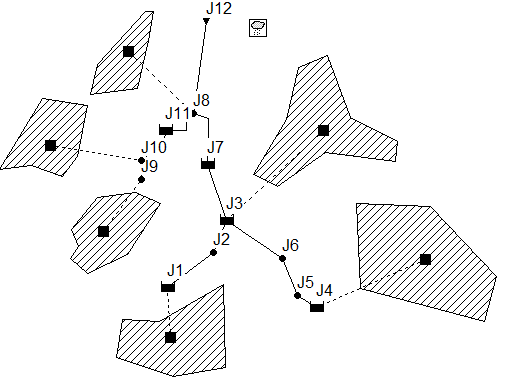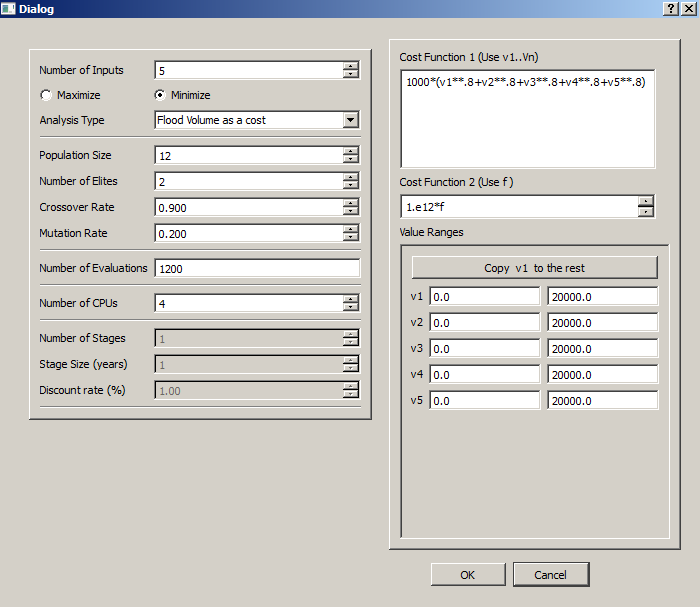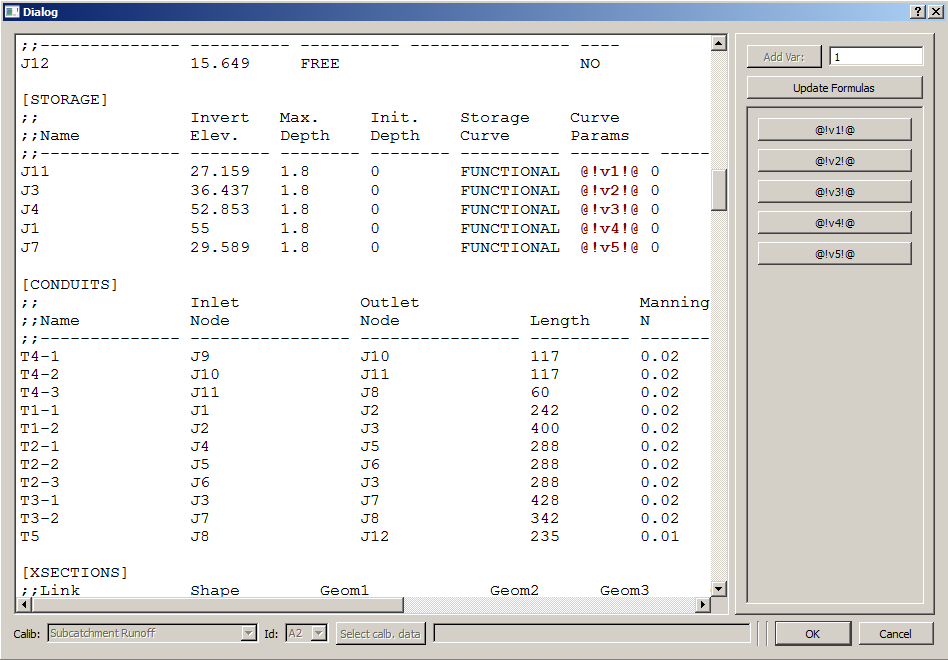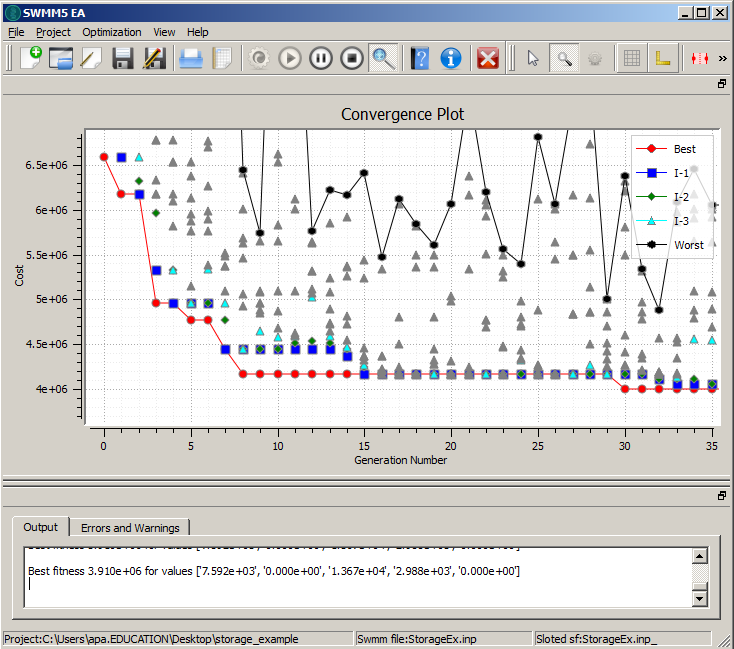Example 1: Simple Optimization¶
Figure above shows the drainage network used in this example. It consists of six subcatchments, drained to the outlet J12 by a dendritic drainage network. The network has five detention basins (J1, J3, J4, J7 and J11). Each detention storage is 1.8 m deep. We want to find the least-cost design that does not cause flooding [1]. The cost c_1 for construction of a detention basin of area a is simplified as:
c_1= 1000 a^{0.8}
We apply the constraint of not allowing for flooding by adding a penalty (cost) for flooding (c_2). We are not really interested in calculating ‘cost’ of flooding, rather we just want to make it high so that the optimizer penalizes the solutions with flooding. For example we could use:
c_2= 1.0E12 f
Following figures show the Project parameters and swmm input file place-holders used in the example, respectively.
The figure below shows a part of the convergence plot.
After 100 generations, the best solution has properties:
| Junction | A(m2) |
|---|---|
| J11 | 7592 |
| J3 | 0 |
| J4 | 13670 |
| J1 | 2987 |
| J7 | 0 |
| Constrction Cost | 3.91 millons |
|---|---|
| System is not flooded. | |
|---|---|
| [1] | For a design rainstorm lasting over a period of 2:00 hours, with 10 year return period. This rain storm is already built into the network model. |



